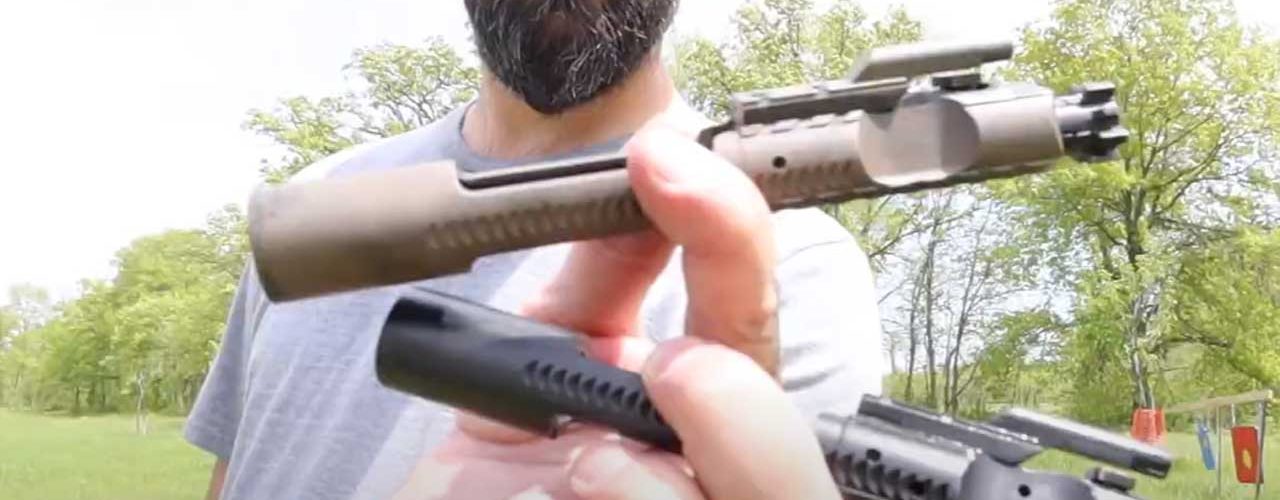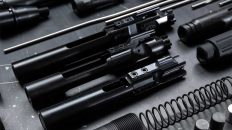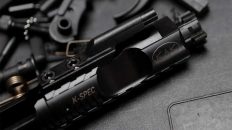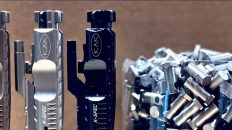When selecting a bolt carrier group (BCG) for a suppressed AR-15, the choice between a down vent and a side vent BCG is critical to optimizing performance and comfort. KAK Industry’s innovative K-SPEC BCG offers a downward venting system that enhances the shooting experience by reducing gas blowback and minimizing the report’s noise, particularly in suppressed setups. This article explores the key differences between down vent and side vent BCGs, highlighting why the K-SPEC is gaining popularity among suppressed AR-15 users.
What is a BCG and Why Venting Matters?
The bolt carrier group (BCG) plays a vital role in the cycling process of an AR-15, guiding the bolt as it chambers and ejects rounds. In suppressed rifles, gas buildup becomes a significant concern, often causing excess gas to blow back toward the shooter’s face. This not only creates discomfort but also affects the overall shooting experience.
Understanding Side Vent BCGs
Traditional side vent BCGs feature lateral gas ports that direct expelled gases to the sides. While this design works effectively in unsuppressed firearms, it can lead to uncomfortable gas blowback when shooting suppressed, as gases escape near the ejection port. Although it provides adequate performance, side venting may leave users exposed to more gas, particularly in high-pressure or suppressed environments.
The Advantage of K-SPEC’s Down Vent BCG
KAK Industry’s K-SPEC BCG introduces a game-changing down vent system, specifically engineered to reduce the impact of gas blowback on the shooter. By relocating the gas relief ports to the bottom of the bolt carrier, K-SPEC’s design directs gas downward through the magazine well, away from the shooter’s face. This provides several advantages:
- Less Gas to the Face: The downward vent significantly reduces the gas exposure, improving comfort, particularly for left-handed shooters or those sensitive to gas blowback.
- Reduced Noise Signature: The down venting system, when paired with a suppressor, helps to minimize the report’s sound, making the rifle quieter in all aspects.
- Enhanced Functionality: The K-SPEC BCG is designed with angled carrier rail cuts to displace debris, providing flawless functionality in rugged conditions, especially when shooting suppressed.
Third-Party Testing: Real Results
KAK Industry conducted third-party testing using high-end sound measurement equipment to compare the down vent K-SPEC BCG against a traditional side vent BCG. The results confirmed that the K-SPEC BCG produces a quieter report and minimizes gas blowback, making it the ideal choice for users looking to optimize their suppressed AR-15 setup.
When to Choose Side Vent
For users running unsuppressed rifles or those who prioritize reducing debris in the magazine and fire control group over gas management, a side vent BCG may still be a preferred choice. KAK Industry also offers K-SPEC versions with traditional side vents for shooters who value more conventional gas redirection.
Conclusion: Down Vent or Side Vent?
Choosing between down vent vs. side vent BCGs depends on your shooting conditions and priorities. If you frequently run a suppressor and want to reduce gas blowback and noise, the down vent K-SPEC BCG is an excellent option. On the other hand, a side vent BCG may suit unsuppressed shooters who prefer a more traditional setup. Regardless of your choice, the K-SPEC BCG’s innovative design ensures reliable and consistent performance.





Add comment